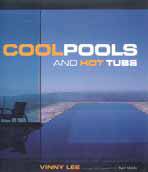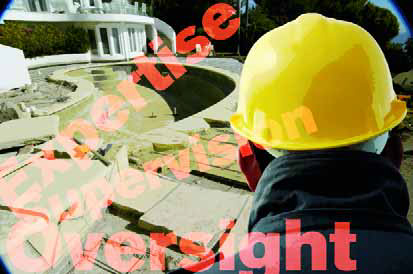pool design
When used to classify a design style, the term “modern” can carry many meanings. From the soaring, audacious forms of Frank Gehry and the sweeping organic spaces of John Lautner to the hard rectilinear shapes of Le Corbusier and the gem-like transparency of Mies van der Rohe, modernism is truly a broad conceptual umbrella. That sprawling diversity leaves designers and their clients with lots of wiggle room to get things done, but even so there can be challenges – as in the case depicted here, where the clients' desire for
Our discussions in the last two issues have been about excavation, which leaves us this time with a big, literal void that serves as a relatively exact dimensional representation of the vessel we're building. After we've installed the forms - a subject I've covered in great detail in a number of past columns - it's time for the installation of the plumbing and steel. Before we jump into that process, however, let me make a key point: Although I am a knowledgeable builder who has paid attention through the years and can work his way through lots of watershaping projects without assistance, I am not
Our discussions in the last two issues have been about excavation, which leaves us this time with a big, literal void that serves as a relatively exact dimensional representation of the vessel we're building. After we've installed the forms - a subject I've covered in great detail in a number of past columns - it's time for the installation of the plumbing and steel. Before we jump into that process, however, let me make a key point: Although I am a knowledgeable builder who has paid attention through the years and can work his way through lots of watershaping projects without assistance, I am not
As I've reported previously, the past few years have seen a proliferation of consumer-oriented books on custom swimming pools. Most put the emphasis on images rather than written information, but I don't object: They're generally loaded with beautiful, inspirational projects and terrific photography. In fact, I use many such publications as sources of ideas and frequently share them with clients as we move into the design phase. But I've found that I need to pick and choose within some of them: While the projects are often executed at a very high level, some aren't all that great. With that one occasional caveat, I've recently been through four of these books - and this time around, they all focus mainly on pools in
As I've reported previously, the past few years have seen a proliferation of consumer-oriented books on custom swimming pools. Most put the emphasis on images rather than written information, but I don't object: They're generally loaded with beautiful, inspirational projects and terrific photography. In fact, I use many such publications as sources of ideas and frequently share them with clients as we move into the design phase. But I've found that I need to pick and choose within some of them: While the projects are often executed at a very high level, some aren't all that great. With that one occasional caveat, I've recently been through four of these books - and this time around, they all focus mainly on pools in
When people ask me what I do for a living, I like to tell them I'm a Texas-style maverick in the world of watershaping. That's a lighthearted way of characterizing what I do, but it speaks the truth when it comes to describing what I think this industry is really all about. Indeed, I see the best watershaping as being defined by a pioneer spirit and an appetite for innovation - a drive and hunger that convincingly overcome the all-too-common fear of trying new ideas, technologies and approaches. In my 37 years in the business, in fact, I've seen the process of shaping water change radically from what I witnessed when I started out in the 1970s. All those years of change and experience have helped me look at the art of watershaping in new ways: As have many other opened-minded artists in this business, I've
In the last several of these "Details," I've covered what happens in my projects before construction begins. Now we're ready to shift gears and look at what happens on site - the place where design and execution meet. Before we look at the way I build things, however, I want to take a hard look at common practices in the field. What I write here may seem harsh, but it's not intended that way: To establish a baseline for doing things in what I would term the right way, I need to point to practices in our industry - particularly the pool/spa sector - that
In the last several of these "Details," I've covered what happens in my projects before construction begins. Now we're ready to shift gears and look at what happens on site - the place where design and execution meet. Before we look at the way I build things, however, I want to take a hard look at common practices in the field. What I write here may seem harsh, but it's not intended that way: To establish a baseline for doing things in what I would term the right way, I need to point to practices in our industry - particularly the pool/spa sector - that
In my last two columns, I've gone to unusually length in describing my views of the design-preparation and presentation processes. This time, the subjects are more compact but, in practical terms, no less significant and vital: permits and contracts. We left the discussion last time at the point where I've shown my clients the design package and it's time for them to decide what to do. In most cases, they choose to build - the usual outcome for me because of the way I pre-qualified my clients and communicate clearly with them at every step of the way. In general, if you've done the right things to this point and the project reflects an informed knowledge of what is involved in



















Pioneer Pride